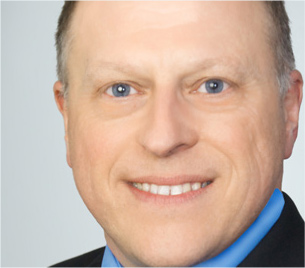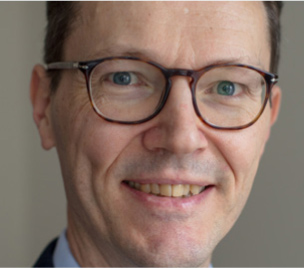In late 2019, The CAS Institute (iCAS) awarded one of its newest credentials, the Certified Catastrophe Risk Management Professional (CCRMP). Working in conjunction with the International Society of Catastrophe Managers (ISCM), iCAS offers two levels of credentials in catastrophe risk management: the higher-level CCRMP and, for those with less experience in the industry, the Certified Specialist in Catastrophe Risk (CSCR) credential.
Amy Brener, director of The CAS Institute, interviewed the first four CAS members who became CCRMPs. They discussed the significance of the new credential.
Howard Kunst, FCAS, CCRMP, is the chief actuary, science & analytics at CoreLogic in Irving, Texas. He has a passion for educating the insurance community about the various types of catastrophe risk models and how they can be used, which is extremely important now given the industry’s growing interest in learning more about natural catastrophes.
Minchong Mao, FCAS, CCRMP, is managing director for Aon in Chicago. She has worked in the industry for 18+ years and has volunteered for the ISCM and the CAS for many years. She is one of the original members of the iCAS Steering Committee.
Stephen Mildenhall, FCAS, CSPA, CCRMP, is an assistant professor of risk management and insurance and the director of insurance data analytics at the school of risk management in the Tobin College of Business at St. John’s University in New York City. A prolific author of actuarial science, he also serves on the boards of the CAS and iCAS.
Rade Musulin, ACAS, CCRMP, has spent most of his career in cat risk management in the U.S. and Asia Pacific. He has worked in several nontraditional areas, including political lobbying, media, climate risk, community resilience and executive management. He is immediate past vice president–casualty of the American Academy of Actuaries and a principal at Finity Consulting in Sydney, Australia, leading its climate risk practice.
Amy Brener: Minchong, why was it important to create these credentials and can you describe the process used to develop the syllabi and the exams?
Minchong Mao: Employers need training materials to bring employees up to speed. These credentials will supplement existing training, so it is a lot easier for employers to identify and retain talent. From an employee’s perspective, a clear, externally validated certification demonstrates expertise and qualifications. Among insurers, reinsurers, brokers and consulting firms, we now have several thousand professionals globally. With this level of scale, it makes sense to have these credentials.
A steering committee of key leaders from the ISCM and iCAS designed the curriculum structure and the syllabus, which includes the high-level framework of each exam. We set up the two-tier exam process. After being approved by the steering committee, the syllabus was handed over to the exam subject matter expert (SME) group.
The SME group included people who are familiar with the CAS and the Chartered Property Casualty Underwriter exam processes, who understand the education standards of those organizations and who are knowledgeable in the industry. To develop each exam, the SME group recruited qualified volunteers. In order to ensure the quality of the exams, a screening committee vetted the volunteers’ education, experience and references.
The iCAS facilitated training on how to write learning objectives, knowledge statements and exam questions, all of which were peer-reviewed. Developing learning objectives included identifying study materials on relevant topics.
AB: Steve, you and Minchong are already senior in this field. Why was it important for you to get the CCRMP?
Stephen Mildenhall: As actuaries we value credentials and understand their importance. Credentialing recognizes that you have a certain body of knowledge. I am convinced that this will be the gold standard for cat modeling, and it was worth the investment of time to put in an application to become a CCRMP.
MM: Catastrophe risk management work impacts rate filings, underwriting risk selection and rating agencies’ capital adequacy tests. University curriculum and actuarial exams don’t cover in-depth cat risk management topics. These credentials are a perfect fit to fill the knowledge gap; they add credibility to our work and bring the profession to a higher standard.
AB: Rade, what prompted you to get the credential?
Rade Musulin: I have seen firsthand the consequences of catastrophe management breakdowns, starting with how Hurricane Andrew devastated Florida’s economy and insurance industry. It took decades for the state to recover by enacting stronger building codes, developing new regulatory standards and creating new structures like the Florida Hurricane Catastrophe Fund. New catastrophe risk management tools were critical in the recovery. In 2004, four hurricanes hit Florida and in 2005, Katrina tore through the Gulf states, and in both events, the insurance system and housing market responded better than in 1992, reflecting how better cat risk understanding yields great social benefits.
I have been doing most of my work in the cat space and have found it to be very actuarial, though not in the traditional sense, so this credential represents an important evolution in our educational process. Catastrophe risk is one of the most important risks the insurance industry faces, and actuaries possess unique skills in tail risk and extreme event management. In fact, understanding and managing cat risk is at the core of our actuarial mission. Cat risk management also provides a great opportunity to collaborate with experts in other disciplines such as meteorologists, engineers and data scientists. I wanted to get this credential to support it and demonstrate the importance this area has to the profession.
AB: Howard, explain how you apply your actuarial background to science and analytics and how the CCRMP reflects that experience?
Howard Kunst: Before my current position, I did a lot of work with catastrophe model results. Twenty years ago, I was part of team building one of the first by-peril rating models for Florida homeowners to better account for hurricane risk. Now I work with the teams building those models and provide guidance on how the models have been used and will be used. Using my actuarial skills, I can validate that the model results are accurate and meaningful. Throughout my career, I’ve touched both sides of the catastrophe modeling industry, and that unique experience is highlighted within the CCRMP credential.
AB: What advice would you give someone who is interested in specializing in the field of catastrophe risk management?
SM: This topic falls between departments and syllabi in university education: You can major in risk management or actuarial science, but not in cat management. In terms of integrating those pieces of knowledge and presenting them in a way that will be relevant to how you will be using them in practice, you really can’t do better than this CCRMP syllabus and credential. I think it needs to be combined with work. (We have work experience standards within the qualification process.) The material is extremely relevant to a catastrophe risk manager’s day-to-day job. I hope a lot of companies can incorporate this material in place of in-house training. Students will find that this product helps to prepare them well and gives them context and a better understanding of what they are doing as they begin their professional careers as catastrophe managers.
RM: To young people who are considering the credential early in their careers, I would tell them that, in the next decades, catastrophe risk management will be one of the most exciting areas, especially dealing with rising sea levels and other manifestations of climate change. This is an area where there will be a lot of opportunity in coming years for people who master this material.
HK: The best advice I have is that it is important to learn about all aspects of catastrophe risk management — underwriting, pricing and aggregation/portfolio risk management — and how they are all intertwined. A holistic understanding of the process can certainly make all other processes within catastrophe risk management much more understandable.
MM: Cat risk management is a lifelong learning journey. There will be continuing education requirements so that credential holders will remain current. I would encourage candidates as they go through the process to provide their feedback and consider volunteering. Their help will make the program stronger and better.
A CAS subsidiary, The CAS Institute (thecasinstitute.org) provides educational opportunities to quantitative specialists in predictive analytics and data science as well as catastrophe risk management. For more information on the CCRMP and CSCR credentials, visit CatRiskCredentials.org.















